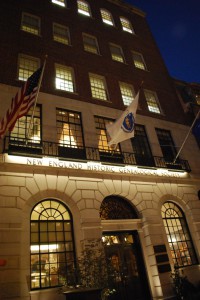 David Allen Lambert and Jennifer Pustz will speak at NEHGS on Wednesday, March 26, on “Uncovering African American Stories.”
David Allen Lambert and Jennifer Pustz will speak at NEHGS on Wednesday, March 26, on “Uncovering African American Stories.”
As a community historian for Stoughton, Massachusetts, I have studied all local families from the early eighteenth to the early twentieth centuries. Within Stoughton there was a population of Native Americans placed into the Praying Indian village of Punkapoag through the efforts of the Rev. John Eliot in 1657. As the Tribal Historian of the Massachuset-Punkapoag Indians, I have also spent many years researching the members of that community.
By the early eighteenth century, the population of the Punkapoag Indians was diminishing. Marriages between Punkapoag Indians and former slaves were not uncommon. One particular Punkapoag Indian – Elizabeth Will (the daughter of Nuff Will and Sarah Moho) – married former slave Isaac Williams, a Revolutionary War soldier from Roxbury, Massachusetts. This African-American / Native American family would live in the northern part of Stoughton for over half a century. Williams collected a federal pension for his service during the war. His widow Elizabeth lived to be more than 100 years of age, dying in 1848.
There were other members of the Stoughton African-American community whose stories are harder to piece together. It is for this reason I started researching and lecturing on pre-Civil War era African-American families in New England. For the Stoughton Historical Society website, I compiled sketches of the eighteenth and nineteenth century African-American families in our community.
My Wednesday lecture focuses on primary and secondary sources for tracing the stories of African-American families. One resource that is often overlooked is the 1754 Slave Census of Massachusetts. This census substitute was authorized to find the population of male and female slaves over the age of 16 in each community. This does not account for any slave under 16, and also sadly does not list the slave(s) by name or the names of the slave owners. It does however provide a baseline for determining communities with a slave population. In Stoughton, according to this census, there were six males and two females over the age of 16 in town.
Other sources I have turned to are newspaper advertisements for runaways, probate records, and of course church and town vital records. These help add details to the story, and each name or fact paints a clearer picture of a forgotten chapter when slavery was a legal institution in the Commonwealth of Massachusetts. I look forward to meeting with members and friends at tomorrow evening‘s program, “Uncovering African American Stories,” at NEHGS.
One thought on “The Indian and African-American populations of Stoughton”